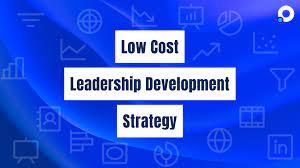Communication skills might sound like a secondary skill, but for a leader, they are one of the most essential.
Why?
According to some research, around 93% of a leader's effectiveness depends on their communication skills.
This striking statistic underlines the immense value of communication in leadership roles. From conveying vision to fostering a collaborative work environment, the role of communication in leadership is indispensable.
In this blog, we will take you through the basics of communication skills, why they are needed in a corporate environment, and their crucial role in leadership development.
Basics of Communication Skills Training
Effective communication is the cornerstone of impactful leadership. It involves more than just the transmission of information. It's about ensuring that the intended message is received and understood.
At its core, communication in leadership can be divided into two main types: verbal communication and non-verbal communication. Each plays a vital role in how leaders convey messages, connect with teams, and foster an environment of mutual respect and understanding.
Verbal Communication
Verbal communication includes all forms of spoken information exchange. For leaders, mastering verbal communication means being able to articulate ideas, instructions, and feedback in a clear and concise manner. It involves several key components:
Clarity and Conciseness: Being able to express thoughts and instructions clearly reduces misunderstandings and streamlines operations. It’s crucial for leaders to get to the point without unnecessary elaboration that could lead to confusion.
Tone and Pace: The way a leader speaks can significantly impact how the message is received. A calm, confident tone can inspire and motivate, while a rushed pace can cause unnecessary stress or misunderstanding.
Active Listening: Integral to verbal communication is the ability to listen actively. This means more than just hearing. It means understanding and processing the information shared by others, showing that their input is valued.
Non-Verbal Communication

Non-verbal communication involves messages sent and received beyond words. These cues can support or contradict what is being said verbally. Non-verbal communication includes the following components:
Body Language: Posture, gestures, and movements convey a wealth of information. Open and confident body language can reinforce a leader’s verbal message, while closed or anxious non-verbal cues can undermine it.
Facial Expressions: The face is incredibly expressive and can communicate a wide range of emotions. Leaders must be aware of their expressions to ensure they match the message they intend to convey.
Eye Contact: Maintaining appropriate eye contact signifies attention and respect, fostering a deeper connection and engagement during conversations.
Understanding and mastering both verbal and non-verbal communication allows leaders to ensure their message is not just heard but felt and understood.
Mastering Active Listening in Leadership
Active listening is a critical component of effective communication and a fundamental skill for successful leadership. It's about fully concentrating on the speaker, understanding their message, providing feedback, and retaining the information.
Active listening in leadership fosters a culture of respect, encourages open dialogue, and leads to better decision-making. Here’s how leaders can master this vital skill:
Give Full Attention to the Speaker
Leaders should eliminate distractions and focus their attention fully on the speaker. This means putting aside electronic devices, avoiding interrupting, and making eye contact. Giving undivided attention not only helps in understanding the message but also shows the speaker that their thoughts and feelings are valued.
Non-Verbal Cues Show That You’re Listening
Use non-verbal cues to show you’re engaged. Nodding, smiling, and maintaining an open posture convey that you are actively listening. Such gestures encourage the speaker to continue and open up further.
Provide Feedback
Reflect on what has been said by paraphrasing or summarizing the main points. Asking clarifying questions shows that you are not just hearing but also processing the information. Feedback helps in confirming understanding and resolving any doubts.
Defer Judgment
Active listening involves holding back immediate judgment or criticism. By allowing the speaker to finish their thought without interruption, leaders foster an environment of trust and openness.
Respond Appropriately
Active listening culminates in an appropriate response. Leaders should acknowledge the speaker’s feelings and viewpoints, even if they differ from their own. A thoughtful, respectful response, whether it’s an agreement, a differing opinion, or a decision, reinforces the value of the conversation and the relationship.
Encourage Sharing
Creating an environment where team members feel comfortable sharing ideas and concerns without fear of immediate judgment or counterattack is crucial. Leaders can encourage this by asking open-ended questions that stimulate discussion and by expressing appreciation for the input received.
Mastering active listening enhances a leader’s ability to understand and connect with their team, resolve conflicts, and make informed decisions. It’s a skill that, when practiced regularly, can transform leadership effectiveness and organizational culture.
10 Effective Communication Strategies for Leaders
Effective communication is pivotal for leadership success, bridging gaps between vision and reality. It also helps foster an environment of transparency and trust.
Leaders equipped with strong communication strategies can motivate their teams, drive alignment, and navigate challenges with resilience.
Here are 10 strategies leaders can adopt to enhance their communication effectiveness:
1. Tailor Your Message
Understand your audience and tailor your message to suit their needs, preferences, and level of understanding. This personalized approach ensures that your message resonates more effectively, whether you're addressing an individual team member or the entire organization.
2. Practice Transparency
Leaders who communicate with transparency build trust and credibility. Share not only successes but also challenges and failures. This openness encourages a culture of honesty and mutual support within the team.
3. Utilize Multiple Communication Channels

Different messages may require different modes of communication. While email might be appropriate for sharing general updates, complex or sensitive issues may be better addressed through face-to-face meetings or video calls. Leverage a variety of channels to ensure your message is conveyed in the most effective manner.
4. Encourage Two-way Communication
Create opportunities for dialogue, inviting feedback and questions from your team. Two-way communication fosters an environment where everyone feels valued and heard. It can also provide leaders with insights into team morale and engagement.
5. Be Consistent
Consistency in your message and communication style helps to avoid confusion and ensures that your team understands the organization's goals and their role in achieving them. Regular and consistent communication can reinforce key messages and keep everyone on the same page.
6. Focus on Listening
Effective communication is as much about listening as it is about speaking. Encourage open dialogue, listen to what others have to say, and show that you value their input. This not only improves mutual understanding but also helps in identifying and addressing any concerns or issues.
7. Use Real-Time Examples
Stories and real-life examples can make your message more relatable and memorable. They can help illustrate complex ideas in a way that's easy to understand and connect with emotionally.
8. Develop Emotional Intelligence
A high level of emotional intelligence enables leaders to read between the lines and understand the emotions and underlying concerns of their team members. This awareness can guide the approach to communication, ensuring it is empathetic and responsive to the needs of the audience.
9. Provide Clear Calls to Action
Ensure your communication is actionable by providing clear calls to action. Let your team know exactly what is expected of them and by when. This clarity helps to drive momentum and accountability.
10. Reinforce Key Messages
Repetition is a powerful tool in communication. Reinforce key messages through various channels and over time to ensure they are understood and remembered. This helps avoid any delays or unnecessary errors.
By integrating these strategies into their communication style, leaders can significantly enhance their effectiveness, fostering a culture of openness, alignment, and shared purpose.
Executive Communication Skills Training Programs
Executive communication training programs have become essential for leaders at all levels. These specialized programs are designed to refine the communication skills of executives, enabling them to convey their vision, influence stakeholders, and lead their organizations more effectively.
Let’s take a closer look at what these programs entail and how they benefit leaders.
Focus Areas of Executive Communication Training
Strategic Communication
Training programs emphasize the importance of strategic communication, teaching leaders how to plan and deliver messages that align with the organization's goals and values. This includes crafting clear, compelling narratives that resonate with diverse audiences.
Public Speaking and Presentation Skills

A significant component of executive communication training is enhancing public speaking skills. Leaders learn how to engage and persuade audiences, manage public speaking anxiety, and use storytelling to make an impact.
Interpersonal Communication
These programs also focus on interpersonal skills, including active listening, empathy, and providing constructive feedback. Leaders are trained to build strong relationships with team members, peers, and stakeholders.
Crisis Communication
Executives learn how to communicate effectively during crises, maintaining transparency and calmness while providing clear direction and reassurance to their teams and the public.
Media Training: For leaders who interact with the media, training often includes media preparation, teaching them how to handle interviews, press conferences, and social media interactions confidently and strategically.
Cross-Cultural Communication
With global business operations, understanding and navigating cultural nuances in communication is vital. Executive training programs often include modules on cross-cultural communication to equip leaders with the skills to lead diverse teams.
Benefits of Executive Communication Training
Enhanced Leadership Presence
A leader’s presence is about more than just the physical space they occupy; it's the aura of credibility, confidence, and authority they project.
Executive communication training sharpens leaders' ability to command attention, engage audiences, and convey confidence through both verbal and non-verbal communication techniques.
This presence is crucial during high-stakes meetings, negotiations, and public speaking engagements, where first impressions and perceived confidence can significantly impact outcomes.
Improved Decision-Making
Effective communication is integral to decision-making processes. It ensures that leaders receive comprehensive and diverse viewpoints from their team members, aiding in more informed and holistic decisions.
Executive communication training enhances leaders' ability to ask the right questions, actively listen to responses, and effectively weigh the information presented.
This leads to decisions that are not only better informed but also more likely to be supported by the team due to the inclusive process.
Increased Influence
The ability to influence is a hallmark of effective leadership. Through executive communication training, leaders learn to craft persuasive messages, utilize storytelling, and appeal to their audience's emotions and logic.
These skills enable leaders to sway opinions, motivate change, and drive action within their organization and beyond.
Influence extends to negotiations, stakeholder engagement, and rallying teams around a vision, making it an invaluable asset in the leadership toolkit.
Stronger Team Dynamics
Communication is the foundation of team dynamics. Leaders who communicate clearly, openly, and empathetically can build trust, resolve conflicts, and create a positive work environment.
Executive communication training teaches leaders how to provide constructive feedback, recognize achievements, and communicate expectations effectively.
These skills contribute to a culture of transparency and mutual respect, where team members feel valued and motivated to contribute their best work.
Better Crisis Management
Crises demand swift, clear, and decisive communication. Executive communication training prepares leaders to manage their message during a crisis, ensuring they communicate with transparency, empathy, and authority.
Leaders learn to maintain composure, provide clear instructions, and reassure stakeholders, minimizing panic and confusion.
Effective crisis communication can preserve an organization's reputation, maintain public trust, and expedite recovery.
Implementing Executive Communication Training Programs

Implementing executive communication training within an organization requires a strategic approach to ensure that the investment yields tangible benefits for both the leaders and the organization as a whole.
Here are key steps and considerations to effectively implement executive communication training:
Assessing Needs and Goals
Begin by assessing the specific communication challenges and needs of your executives and the organization. Identify the gaps in current communication skills and the desired outcomes of the training.
This might involve surveys, interviews, or feedback from various stakeholders to understand the areas that need improvement, such as public speaking, media handling, crisis communication, or interpersonal communication.
Customizing the Program
Based on the assessment, customize the training program to address the identified needs. Tailoring the content to fit the unique challenges and goals of your organization will make the training more relevant and impactful.
Consider including modules on leadership communication styles, active listening, non-verbal communication, and emotional intelligence, among others.
Choosing the Right Format and Delivery
Decide on the most effective format and delivery method for the training. Options include in-person workshops, online courses, webinars, and coaching sessions.
Blended learning approaches, which combine online and offline elements, can offer flexibility and cater to different learning preferences. The choice of format might also depend on logistical considerations, such as the executives' schedules and locations.
Engaging Expert Trainers
Select trainers or facilitators who have expertise in executive communication and a strong track record of working with leaders. Experienced trainers can provide personalized feedback, share insights from their own experiences, and adapt the training to the participants' needs.
Consider trainers who can inspire and challenge your executives to step out of their comfort zones and embrace new communication strategies.
Incorporating Practical Exercises
Ensure the training includes practical exercises, such as role-playing, simulations, and video-recorded practice sessions. These exercises allow participants to apply what they've learned in a controlled environment, receive constructive feedback, and refine their skills.
Real-world scenarios relevant to your organization can make these exercises more impactful.
Providing Ongoing Support and Feedback
Executive communication training should not be a one-off event. Provide ongoing support and opportunities for practice after the initial training. This could include follow-up sessions, one-on-one coaching, and peer learning groups.
Encourage executives to set personal development goals and offer regular feedback to help them continue improving their communication skills.
Measuring Impact
Develop metrics to evaluate the effectiveness of the training program. This could include pre- and post-training assessments, feedback from participants and their teams, and observable changes in communication practices within the organization.
Use these metrics to refine the program over time and ensure it continues to meet the evolving needs of your leaders and the organization.
Implementing executive communication training is a strategic investment in the leadership capacity of your organization. By carefully planning and executing the program, you can enhance your executives' ability to communicate effectively, lead with confidence, and drive your organization toward its strategic goals.
Integrating Communication Skills in Leadership
In any successful organization, good communication is key. It's like the glue that holds teams and their goals together. This deep dive into communication skills shows just how important they are for leadership.
We've looked at everything from the basics of talking and listening to more advanced techniques for really making an impact as a leader.
Along the way, we've seen how crucial it is to listen well, share ideas clearly, and why specialized training can make a big difference. It's clear that learning to communicate better is something that benefits both individual leaders and their organizations as a whole.
By focusing on improving these skills, leaders can do a better job themselves and help their organizations thrive in today's complex business world.
Ready to Transform Your Leadership Communication?
Elevate your leadership and drive your organization forward with unparalleled communication skills. Our comprehensive communication skills training programs are designed to equip leaders and employees alike with the tools they need for success.
From mastering active listening to excelling in executive communication, our tailored solutions ensure your team's communication skills become a cornerstone of your organizational strength.
Key Takeaways From the Blog
- Communication skills are crucial for leadership success:
- Active listening enhances leadership effectiveness
- Tailored communication training programs yield the best results
- Continuous learning and adaptability are key
- Investment in communication training is an investment in organizational success
FAQs
1. Why are communication skills critical for business leaders?
Communication skills are essential for leaders because they help convey vision, direction, and expectations clearly to their teams. In a B2B context, effective communication also ensures that leaders can negotiate deals, manage client relationships, and collaborate with partners successfully, driving organizational growth and success.
2. How can improving communication skills impact a B2B organization?
Improving communication skills within a B2B organization can lead to better teamwork, more efficient decision-making, and stronger relationships with clients and partners. It can also enhance the organization's reputation, as leaders represent the company in every interaction, making clear and effective communication a key asset.
3. What are the key components of effective communication for leaders?
The key components include clarity and conciseness in verbal communication, active listening, empathetic understanding, non-verbal cues like body language and facial expressions, and the ability to provide and receive constructive feedback.
4. Can communication skills really be learned and improved, or are they innate?
Yes, communication skills can definitely be learned and improved. While some people may naturally have strong communication skills, training programs and practice can significantly enhance these abilities for anyone, making them more effective leaders.
5. What role does active listening play in leadership communication?
Active listening is crucial, as it ensures leaders fully understand the messages being communicated to them, whether from employees, clients, or partners. It fosters a culture of respect and openness, encouraging more meaningful discussions and collaborations.
6. How do communication skills benefit negotiations and client relationships in a B2B setting?
In negotiations, strong communication skills enable leaders to articulate their positions clearly, understand the needs and constraints of the other party, and find mutually beneficial solutions. For client relationships, these skills help in building trust, resolving issues efficiently, and maintaining a positive, long-term partnership.
7. What steps can a B2B organization take to improve communication skills among its leaders?
Organizations can invest in specialized communication training programs, encourage mentorship and coaching, provide regular feedback, and create opportunities for leaders to practice their skills in real-life scenarios. Emphasizing a culture that values open communication can also encourage continuous improvement in communication skills.

























